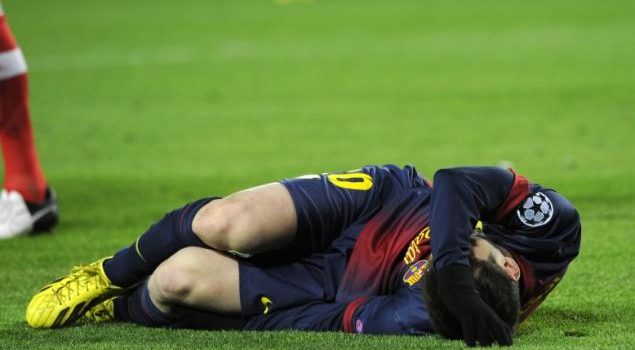The last thing you remember is that you were jumping to head the ball, before the world came crashing down on you. Or maybe, it’s you who came crashing down on a twisted ankle. You don’t know exactly what happened, but you have an excruciating pain in your ankle, a pain so severe that you can barely even think of standing up. You’ve probably got a sprained ankle, one of the most common sporting injuries.
Sporting injuries can vary in nature and severity, but some parts of the body are more prone to get hurt than others. The type of injury also depends upon the type of sport that you are playing.
Here are some of the most common sports injuries in the UK, how they are caused, and how to prevent them.
1. Hamstrings Injuries
Hamstring injuries usually happen in cricket, athletics and football. They are caused when you stretch a hamstring because of excessive standing or running. Hamstring injuries are more common among older players, as their hamstrings muscles have become comparatively less flexible because of age.
Improper stretching and not warming up are common causes for hamstring injuries. Rest, ice, compression, and elevation (RICE) usually cure hamstring injuries.
2. Achilles tendinitis
Named after the Spartan warrior who conquered Troy, Achilles tendinitis refers to inflammation of the tendon at the back of your heel. It is more common among athletes engaging in track events or jumping. Achilles tendinitis is painful and can often make it impossible to run.
The injury is treated by RICE and pain-killers. If not treated, Achilles tendinitis can become chronic.
3. Torn Anterior Cruciate Ligaments
Most common in football, this is a knee injury that happens when a player loses balance and the knee is twisted in an awkward position. The injury is painful and can take some time to heal. RICE and knee-bands are often used to speed up the healing of the torn knee ligaments.
4. Golf Elbow or Tennis Elbow
Tennis elbow usually hits the outside of the elbow, and is caused by tendon degeneration due to repeated backhand strokes. Golf elbow more commonly causes the inflammation of the inside of the elbow because of injury to the epicondyle, the place where forearm-flexing muscles are attached to the upper arm.
The remedy is to exercise the forearms for strength and to use the correct playing technique.
5. Shin Splints
Most common among cyclists and runners, shin splints refer to the pain on the inside of the shin bone. It often troubles people who are not used to exercising, do not do stretching, or build the intensity of the workout a bit too rapidly.
Shin splints can also be caused if you’re wearing improper shoes or by running on hard ground. Rest, ice, stretching, and anti-inflammatory medicine usually cure shin splints without a problem.
6. Lower Back Pain
Although sportsmen rarely develop back pain, it can sometimes affect cyclists, runners, golfers, and tennis players. Improper stretching and not warming up are the most predominant causes of back pain in athletes. A discrepancy in leg length can trigger back pain even with a little running.
While sporting back pain is usually caused by pulled back-muscles, you should consult the physician to make sure it’s not a severer condition, such as a slipped-disk or sciatica, that’s making your back hurt.
7. Ankle Sprain
Coming back to the injury that we imagined in the opening of this post, a sprained ankle is most common in football, volleyball, basketball, and hockey. It can tear the ligaments and even a tendon in the ankle joint. Sever pain is accompanied by swelling of the ankle, and an X-Ray is required to rule out the possibility of a fracture.
A sprained ankle can take some time to heal fully. Avoid this injury by strengthening your ankles through exercises such as ankle lifts, and by wearing a bandage around the ankle.
Dr Garry J McCLean writes for The Workplace Depot on Health and Safety issues.
Please like O-Posts on Facebook
You can follow O-Posts on Twitter @OPosts

